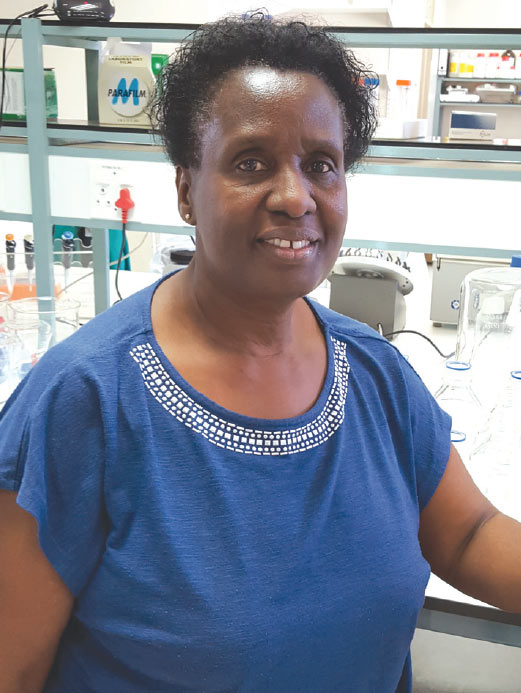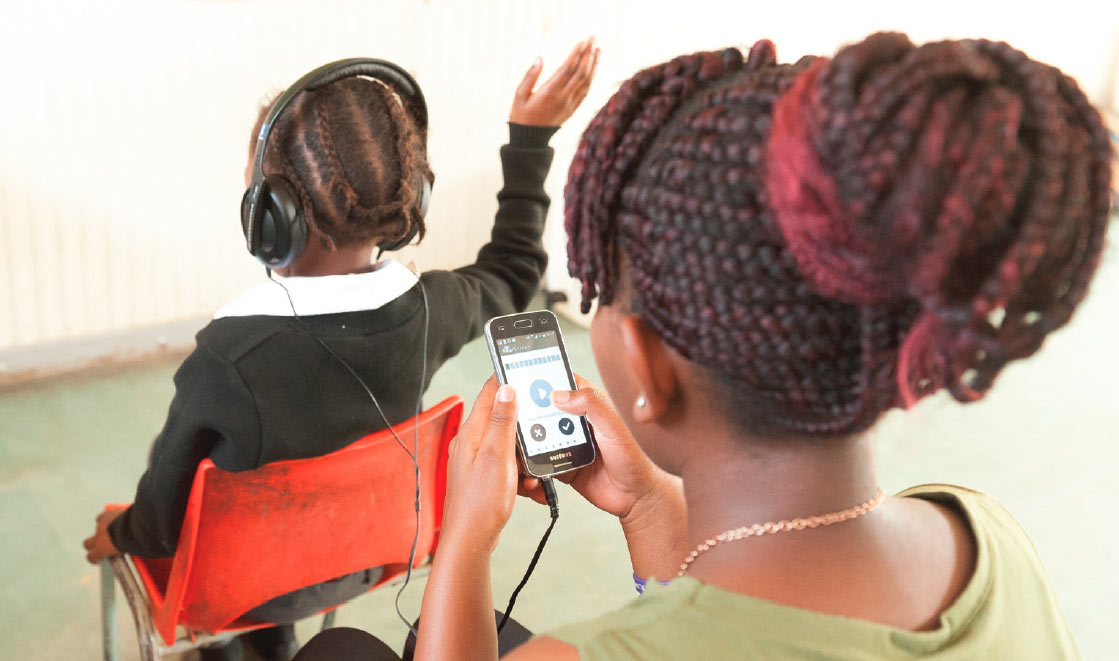 Dr Rosemary Kabahuma
Dr Rosemary Kabahuma
Hearing loss is believed to be the most prevalent sensory deficit in humans. The cumulative findings of genetic research show that the genes for deafness tend to cluster in specific population groups, and that the majority are still unaccounted for.
Dr Rosemary Kabahuma in the Department of Otorhinolaryngology focuses on genomic research into deafness, with the aim of unearthing the genetic bases of hearing loss among sub-Saharan African populations. Her doctoral studies represented a ground-breaking first move into genomic deafness research in sub-Saharan Africa. Her research established that common deafness genes and mutations prevalent in Caucasian and Asian populations are not prevalent among sub-Saharan Africans, findings that have been confirmed in subsequent studies.
Studies worldwide have identified pathogenic variants in over 145 genes, 66 of which have been characterised for nonsyndromic hearing loss, and approximately 150 genetic loci have been mapped. It is estimated that the number of genes could reach 300, equivalent to 1,2% of all human genes. It is this genetic heterogeneity of hearing loss that poses a major challenge to aetiological diagnosis and genetic counselling, especially because most forms exhibit no other identifiable clinical features or signs.
In collaboration with a deafness research team led by Professor XZ Liu at the Miller School of Medicine, University of Miami (USA), Dr Kabahuma has made significant findings in the discovery of the deafness genes prevalent among African population groups from the Limpopo Province of South Africa. They undertook targeted sequencing of 180 genes in a multi-ethnic cohort of 342 mutation-negative deaf probands (the first affected family member) from South Africa, Nigeria, Tunisia, Turkey, Iran, India, Guatemala and the United States (South Florida), detecting causative DNA variants in 25% of multiplex and 7% of simplex families. Further analysis is under way, in which the observed mutations are being screened for and confirmed, in the family members of all the 94 families from South Africa. Overall, the study highlights the importance of family history and the generation of databases for multiple ethnically discrete populations to improve the ability to detect and accurately interpret genetic variants for pathogenicity.
Dr Kabahuma’s genomic deafness research approach also highlights the utility of next-generation sequencing techniques which, in combination with functional study analysis tools, provide insights into causative factors in a genetically heterogeneous human disorder such as deafness.
One cause of deafness is a condition called otosclerosis. It is commonly believed to be congenital and occurs when abnormal bone material grows around the tiny stirrup bone (stapes) in the middle ear.
Otosclerosis usually originates at the foot of the stapes which, in turn, reduces the intensity of sound that is transferred to the cochlea. Eventually the stapes can become fixed, or fused, with the bone of the cochlea. Hearing aids are usually very effective in the early stages of the disease but eventually a stapedectomy may be required to restore some degree of hearing.
Professor Mashudu Tshifularo, Head of the Department of Otorhinolaryngology (ear, nose and throat (ENT)), is widely recognised for his ENT innovations, one of which is the design and patenting of a prosthesis that allows for the surgical replacement of the ossicle (or ossicles) that are not functioning. These are the three tiniest bones in the human body, also called the malleus, incus and stapes, or commonly as the hammer, anvil and stirrup.
Professor Tshifularo’s view is that the complete removal of all components may interfere with the delicate amplification and loud sound dampening system of the inner ear. His innovative approach aims to simplify the stapedectomy procedure and increase the chances of success with minimal intrusion trauma via a patent which includes separate replacement prostheses, each shaped and configured to resemble the natural ossicle it represents. Professor Tshifularo received a Gauteng Accelerator Programme (GAP) Medical Special Recognition award for his innovative hearing prosthesis.
hearScreenTM turns an ordinary smartphone into an easy-to-use and cost-effective solution for screening children and adults for hearing loss.
Professor De Wet Swanepoel of the Department of Speech-Language Pathology and Audiology is the lead inventor in an application that makes widespread systematic hearing testing possible and can be operated by laypersons in primary healthcare contexts. The application makes use of cloud-based data management and a referral system that links schools and patients to services.
The vision of the project is to have an impact on the lives of the 1,2 billion people around the world who suffer hearing difficulties, by providing them with affordable access to screening and linking them to health and hearing services.
In 2015 hearScreenTM received several prestigious awards: the South African Innovation Award in the category of Community Innovation; the Philips Innovation Fellows Competition award, in partnership with the Innovation Hub, for ‘The Next Big Idea’ and the Innovation Summit award for social innovation in early childhood development.
Professor Swanepoel was also honoured by the Southern African Association for the Advancement of Science (S2A3) for his academic work and research through the award of the S2A3 British Association Medal (silver) , one of the highest awards for original scientific research in South Africa.
